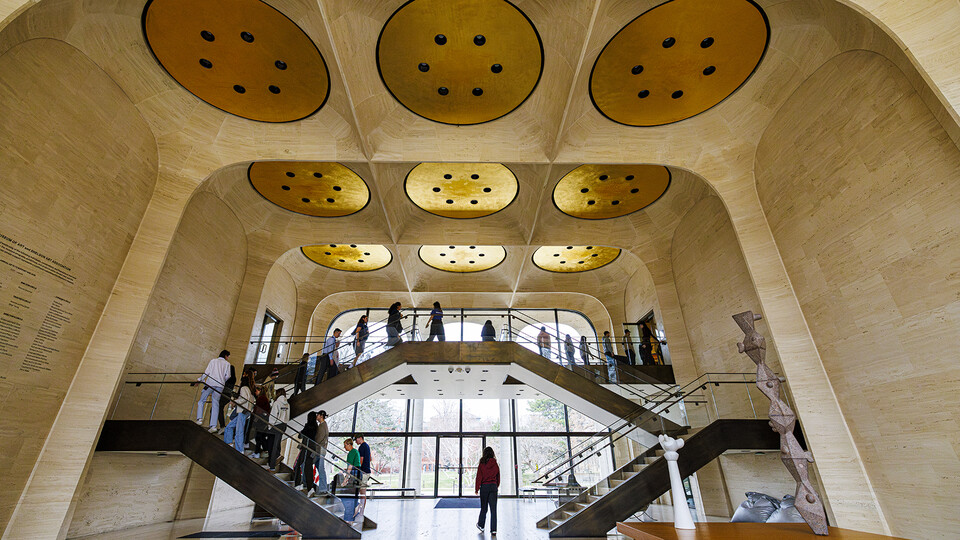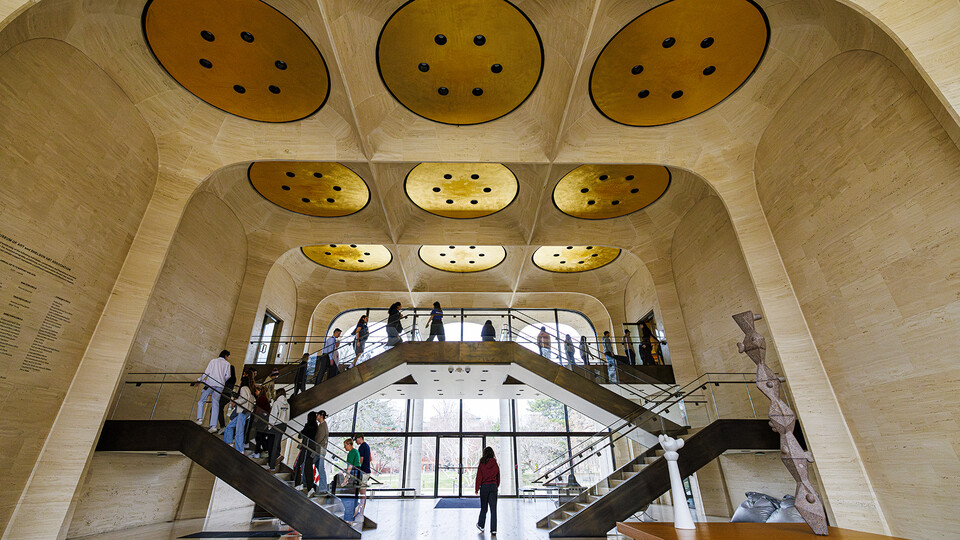
Three college faculty members have been named fellows of the American Association for the Advancement of Science, the world's largest general scientific society. Fellows are selected by their peers for scientifically or socially distinguished achievements that advance science or its application.
- David Berkowitz, Willa Cather professor of chemistry and chemistry department chair, for distinguished contributions to chemical biology and synthetic chemistry, particularly for developing innovative tools to advance research on asymmetric synthesis and enzymology.
- Scott Gardner, professor of biological sciences and curator of parasitology at the Harold W. Manter Laboratory of Parasitology of the University of Nebraska State Museum, for distinguished contributions to parasitology and biodiversity, particularly for applying and integrating museum-oriented field research and modern systematic analysis of parasites and their hosts.
- Andrzej Rajca, Charles Bessey professor of chemistry, for distinguished contributions to organic magnetic materials, particularly for the development of high-spin organic molecules and the first organic polymer with magnetic ordering.
The tradition of electing AAAS fellows dates to 1874. This year's fellows will be formally announced in the Nov. 27 issue of the journal Science. They will be recognized Feb. 13 at the AAAS annual meeting in Washington, D.C. UNL's honorees are among 347 members who were elected fellows this year.
*
David Berkowitz's research focuses on the interface between protein biochemistry and organic chemistry. His contributions have led to innovative tools that aid researchers in synthetic chemistry and chemical biology, with implications for therapeutic drug development.
His research involves designing molecules that bind to specific macromolecules or can be incorporated into protein structure to alter function. One designer molecule became an invaluable tool in unraveling mechanisms important in tumor suppression and melatonin production.
Conversely, Berkowitz's research also uses enzymes as tools to facilitate discoveries of new reactions and catalysts. His research team invented the In Situ Enzymatic Screening approach, which exploits enzymes to obtain real-time information about organic reactions. This technique has led to finding useful new chemical transformations and catalysts.
Earlier this year, Berkowitz served as division director for the National Science Foundation’s Division of Chemistry, where he helped set national priorities for chemistry research.
"It's a tremendous honor," Berkowitz said of his AAAS fellowship. "We do this as a team. It's a recognition that our work has impact beyond the state of Nebraska and beyond the field of chemistry, and that's very gratifying."
*
Scott Gardner is passionate about parasites. As director of the H.W. Manter Laboratory of Parasitology of the University of Nebraska Museum, he oversees one of the world's largest parasite biodiversity collections.
His research focuses mostly on diversity and evolutionary relationships among mammals and their parasites.
"Going into the field to study parasites of vertebrates all over the world, I appreciate the planet's diversity," Gardner said. "We have limited resources, and … we need to save what we have or risk a long decline in our ability to live on the Earth."
In 2014, he led a research team that discovered four new species of tuco-tucos, a gopher-like rodent found throughout much of South America. He also led a team that identified a new pinworm parasite that infected cynodonts, an ancestor of modern mammals, confirming hundreds of millions of years of coevolution.
Gardner's enthusiasm for curation and conservation engenders a drive to educate students and the public about parasitology and biodiversity.
"I was very happy and truly elated," he said of his AAAS recognition. "Maybe with this honor, I can make even more of a difference in the world of biodiversity preservation."
*
Chemist Andrzej Rajca's research focuses on organic magnetic materials. His work has contributed significantly toward improving biomedical imaging and creating tools to better understand proteins and related diseases.
MRIs often rely on injecting patients with potentially harmful contrast agents to produce sharper images. Rajca's research team has developed a safer organic alternative proven successful in mice trials.
Rajca's team also helped develop new nanoparticles that can simultaneously perform both MRI and fluorescent imaging. The material could help scientists track specific molecules in the body, monitor a tumor or determine whether drugs have successfully reached their targets. The work is a collaboration with the Massachusetts Institute of Technology.
In other research, Rajca's team has developed spin labels that work at room temperature. The labels, organic molecules able to bind to other molecules, will enable better understanding of protein structure and function, which will lead to developing tools to advance knowledge of and therapies for protein-related diseases.


